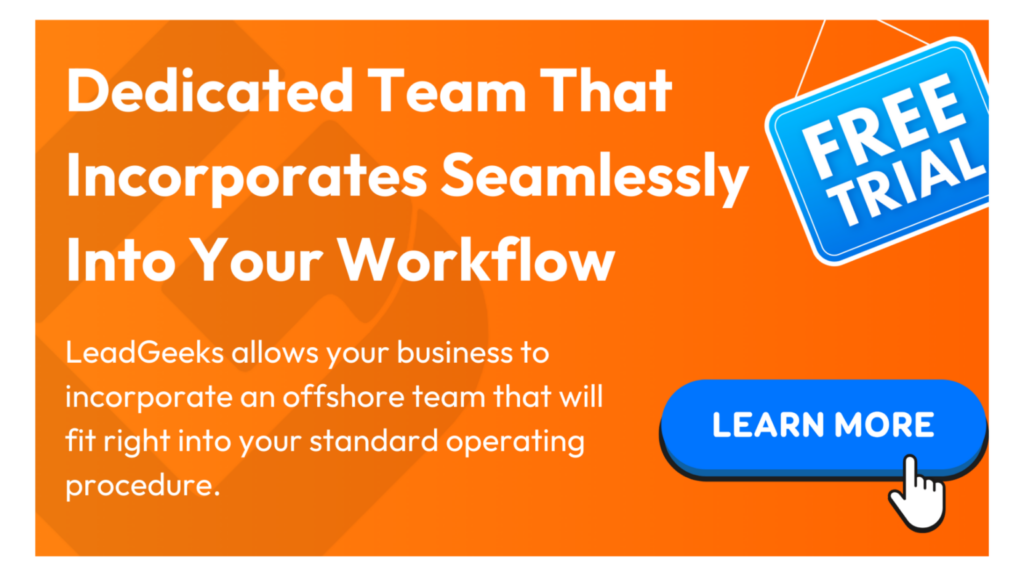Generating high-quality leads is one of the toughest challenges for B2B companies. While channels and tools evolve, the core principles of effective B2B lead generation strategies remain the same: educate, engage, personalize, and convert. Below are four proven strategies you can apply today to strengthen your pipeline.
Using Content Marketing to Educate and Attract
Content marketing is one of the most powerful ways to attract decision-makers and build long-term trust. Instead of pushing sales pitches, your content should provide value first.
Types of Content that Generate B2B Leads:
- Blog posts & guides – Great for answering industry questions and capturing organic traffic.
- Whitepapers & eBooks – Effective for in-depth insights that establish authority.
- Case studies – Showcase real-world results and build trust with prospects.
- Videos & webinars – Highly engaging formats that appeal to busy executives.
Balancing Educational vs Promotional Content:
- 70% of content should focus on educating and problem-solving.
- 20% should position your brand’s unique value proposition.
- 10% can directly promote your offering.
Distributing Content Across the Right Channels:
- Use LinkedIn for thought leadership and professional reach.
- Post on industry forums and communities where decision-makers gather.
- Share snippets via newsletters for ongoing nurturing.
👉 By aligning content with your buyer’s journey, you can attract and nurture prospects until they’re ready to engage with sales.
Using SEO and SEM for Qualified Traffic
Content is powerful, but only if your audience can find it. That’s where SEO and SEM play a critical role in B2B lead generation strategies.
Optimizing for High-Intent Keywords:
- Focus on terms like “best [solution] for [industry]” or “[tool] comparison.”
- Use keyword research tools to find transactional and commercial intent queries.
On-Page SEO Best Practices:
- Write clear H1 and H2s with target keywords.
- Use internal linking to guide readers deeper into your site.
- Optimize meta descriptions for clicks and conversions.
Using SEM to Target Bottom-of-Funnel Prospects:
- Create Google Search Ads targeting decision-ready keywords.
- Use LinkedIn Ads to reach niche B2B audiences with precision.
- Always direct paid traffic to tailored landing pages, not your homepage.
Tracking ROI for SEO and SEM Campaigns:
- Use Google Analytics or HubSpot to track conversions by channel.
- Compare Customer Acquisition Cost (CAC) across SEO and SEM.
- Double down on the channels that generate Sales Qualified Leads (SQLs).
👉 With SEO for long-term authority and SEM for quick wins, you can drive qualified traffic consistently.
Make Use of Webinars, Events, and Conferences
Events, whether virtual or in-person, remain one of the strongest ways to generate warm leads. When done right, they offer both engagement and relationship-building opportunities.
Choose the Right Topic that Attracts the Right Audience:
- Focus on industry trends and practical challenges.
- Invite credible guest speakers to increase authority.
Pre-Event Promotion Strategies:
- Use email campaigns to nurture sign-ups.
- Run LinkedIn event ads to boost visibility.
- Encourage speakers and partners to promote on their networks.
How to Keep Engagement High During Events:
- Use interactive polls, Q&A, and chat features.
- Keep sessions short and value-driven (30–45 minutes).
- Offer downloadable resources during the event.
Convert Attendees to Sales-Ready Leads:
- Follow up with a personalized thank-you email.
- Provide recordings and bonus materials.
- Pass engaged attendees to your sales team for outreach.
👉 Events don’t just build awareness—they create immediate opportunities to connect with prospects who have already shown interest.
Role of Personalization in Every Strategy
In today’s crowded market, personalization is no longer optional. Prospects expect communication that reflects their context and challenges.
Beyond First-Name Personalization: Context Matters
- Reference a prospect’s recent company update.
- Mention pain points common to their industry/role.
- Align your message with their stage in the buying cycle.
Using Data and AI for Personalized Outreach:
- Use CRM data to track prospect behavior and engagement.
- Leverage AI tools to automate tailored messaging at scale.
- Segment audiences based on firmographics, demographics, and intent signals.
How Personalization Improves Conversion Rates:
- Increases email open and response rates.
- Builds trust and relevance with prospects.
- Reduces wasted effort on unqualified leads.
Avoiding Over-Personalization Pitfalls:
- Don’t use data that feels too invasive.
- Avoid overloading emails with too many personal details.
- Keep personalization relevant, respectful, and professional.
👉 When applied thoughtfully, personalization turns generic outreach into meaningful engagement, leading to higher conversions.
Checklist for Applying Lead Generation Strategies
1. Content Marketing
- Audit existing content to identify gaps in education-focused assets.
- Create at least one high-value asset (e.g., case study, whitepaper, or guide).
- Set up a content distribution plan (LinkedIn, newsletters, industry forums).
2. SEO & SEM
- Research and list 10–15 high-intent keywords.
- Optimize top-performing pages with better meta tags, internal links, and CTAs.
- Launch a small SEM campaign targeting bottom-funnel keywords.
- Set up tracking in Google Analytics or your CRM to measure ROI.
3. Webinars, Events, and Conferences
- Choose one relevant topic for your audience.
- Build a promotion timeline (emails, LinkedIn posts, ads).
- Prepare engagement tools (polls, Q&A, downloadable resources).
- Draft a post-event follow-up sequence for attendees.
4. Personalization in Outreach
- Define key buyer personas and ICP segments.
- Use CRM data to personalize based on role, industry, and activity.
- Create email templates with placeholders for contextual details.
- Train sales/marketing teams to balance personalization with professionalism.
5. Integration Across Strategies
- Align content topics with SEO keywords.
- Use event insights to create new blogs or case studies.
- Feed data from webinars and SEM into your personalization workflows.
- Review progress monthly and adjust strategies based on performance.
Ready to Implement?
These four B2B lead generation strategies; content marketing, SEO & SEM, events, and personalization, are proven, practical, and scalable. By combining them, you create a lead generation engine that attracts, educates, and converts high-value prospects consistently.
If you find what you are reading so far interesting, why not check us out to read more? We keep up-to-date with the tips, tricks and strategies of B2B Digital Marketing every single week in our blog! Click here to get started!















Leave a Reply